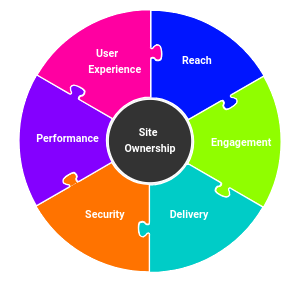
Note: This is part 3 in a series about making technology decisions. Read part 1 here.
Aside from the technologies we choose to develop expertise in and market prominently, we can support a range of related technologies without much trouble. Given our experience and expertise, this means we’re comfortable in just about anything in PHP. If a client comes to us with an existing platform and want our support with it, we’re happy to provide it.
If it’s in a language or platform we are comfortable with, we can likely do the work as well as any freelancer without particular expertise – however, we can’t bring the same level of expertise to know if their existing site has fallen into known pitfalls, or apply the same solutions we’ve used elsewhere to solve the same problem – on a different platform.
I would say things like React, CodeIgnitor, Symfony, and Node.js-based CMSs are a bit above this bar of “comfortable with” – while we aren’t experts in these, we use and support them enough to be able to change existing systems without issue, even if we would not choose to develop new work in these systems.
When selecting technology for a client, I would ask:
-
Does the client have a specific technology in mind? If so, why? Are they open to alternatives?
-
Do they already have a particular technology in use? If so, are they attached to it, and want to keep using it?
-
Do they have employees or vendors experienced in a particular technology?
-
Do they have unusual needs that might fall outside what we can easily deliver with the technology we have in mind?
-
How do they plan to keep the solution secure and maintained down the road?
-
How much do they expect their needs to change over time, related to this system?
-
Who is responsible for keeping it maintained, secure, up-to-date, backed up, functioning properly?
-
How will they respond if something goes wrong?
-
Can the client leave the vendor (including us) for an alternative? (This is the biggest problem with SaaS…)
-
How long do they expect this solution to last?
-
How much have they budgeted for ongoing service, updates, and improvements?
-
How much risk is associated with a particular platform, based on what the site is doing for the business?
The key point here is that when a client uses a technology we are expert in, we can deliver ongoing work at lower cost over the long term, and lower their risks while we’re at it.
If it’s in a neighboring technology, we can manage the risks, but it may cost more to keep up-to-date on the specific needs of a technology we don’t otherwise use.
If it’s in a technology unrelated to our core expertise, we can probably manage the process, and use our same approach to managing it, but we would have to either outsource the day-to-day technical work, or hire for the needed expertise.
Read the final post in this series, about how we pick technology for internal use

Add new comment